HARD TIME BLUES is back, Daddy! We’re making a surprise return run-in and tangling with Portland’s Glitterfox, who are releasing their debut album DECODER on August 22nd via Jealous Butcher. Recent single “Gamma Ray” featured a G.L.O.W.-esque, ‘80s pro wrestling-inspired video that leans into the pure camp at the heart of ‘80s WWF and beyond. Our intrepid wrestling correspondent Luke Phillips spoke with Andrea Walker [they/them]—lead guitarist and songwriter for the band—about their childhood wrestling fandom, threading the line between tender, emotive, and evocative songwriting and the appeal of wrestling, American Gladiators, Fleetwood Mac, and more.
So Glitterfox has been around for several years at this point, and the band’s obviously evolved a lot over the last couple of years. Glitterfox’s early stuff is, essentially, straight-up folk—on the last EP, a couple of years back, you had almost a ‘70s, Laurel Canyon-type sound. Taking us through the decades, the new singles and everything leading up to the debut album has more of an ‘80s bent to it. Especially, of course, the pro wrestling-themed music video and stuff. Was that a conscious decision to keep updating the sound? Or was that just how the band evolved naturally?
Andrea Walker [Glitterfox]: Yeah, it’s definitely the natural evolution of the band. It was never like this thing where we were just like, “Oh, this, this thing is cool now—we should do more of that.” It’s just been a natural evolution. Like the band started honestly 12 years ago, with just me and Solange as a duo, and it was very folksy with lots of harmonies, because, like, I’m from the South—I’m from North Carolina—so it had a very, like, Southern Americana (sound). And then we’re trying to make a living, so we’re playing in these bars, so we got to get a little bit louder. So it naturally moved into more of a roots rock kind of feel, and Solange was playing the drums and I’m just, you know, pounding on an acoustic guitar. And then in 2018, a friend gave me an electric guitar, and so I started very slowly building a pedal board and I just found the tones I really liked.
I started collecting guitar pedals from the early ‘80s. So now, a significant amount of my guitar pedal board is vintage boss pedals and specifically vintage boss modulation pedals. So the things that kind of give it that nostalgic ‘80s feel are really just the tones. It’s like, flander phaser, chorus, but they’re from the early ‘80s, so these are like the actual pedals that, like, the Cure was using, and our bass player uses some of them too. We didn’t even have a drummer until three years ago. Eric—our bass player— joined us seven or eight years ago, but we still, we didn’t even have a drummer, so it’s like once Blaine joined the band, then the sound really could start moving more into this indie rock feel. And if I’m gonna put something on, I’m gonna put on Deep Sea Diver or I’m gonna put on Big Thief, you know? I love indie rock. So, yeah, once we had the full four-piece band, and I’d gotten these like vintage guitar pedals, that kind of pushed it into this modern sound that we have, like the sound that we have today was really influenced by all those moves.
This is something I’ve asked people before, but to that point—because this is your first album, as an artist you’re juggling what you sound like as a band in totality so far and documenting that. Versus, you know, what you sound like now and basically treating the album as a snapshot capturing what the band sounds like live in this moment and documenting that instead. What, what kind of approach do you think Glitterfox takes?
AW: So we track everything live. We, when we go in the studio as the band, the four of us, we’re in different isolation rooms, but we play everything live. The only thing we do from there is, like, we might bring in another player, like there’s a synth player named Lizzie Ellison that we love bringing in, and she played on a lot of stuff. There are some string arrangements for some of the songs. I might come in and double up a guitar part, or sometimes I’ll hop on a little keyboard and add some synth parts in the studio. But for the most part, the recordings are very, very true to what we sound like when we perform live, which feels great. When we go in the studio, it’s nice, because we will have the song kind of 80% figured out. When we go into the studio, we always like to leave a little bit of room for that studio magic and a little bit of room for experimentation.
I’m sure it helps in touring the record, right?
AW: Yeah, if you hear the recording and then you hear us live, they are extremely close. We’re playing it just like the album, which is nice. If people fall in love with these songs because they heard us on Spotify, if they come to our show, then that’s exactly what they’re gonna hear.
Pivoting into the “Gamma Ray” video. You have the very ‘80s pro wrestling-inspired video for “Gamma Ray.” How did that come about? Are you or anyone in the band into pro wrestling yourselves?
AW: Yeah! So the idea for the video came completely from our bass player Eric’s wife Kaylee, who is a wonderful artist and she’s been making videos. She makes a lot of videos on Instagram and is really successful with that. A year ago, she got the idea like, “Hey, you guys should do a wrestling video sometime.” We didn’t even really have the song yet, but she just had this idea for a pro wrestling video. For me, I’m a child of the ‘80s. I was born in ‘82, so I grew up with Macho Man Randy Savage, Nature Boy Ric Flair, Hacksaw Jim Duggan, The Ultimate Warrior… I grew up hardcore on ‘80s wrestling as a child and was just in love with it, so. As we were recording the album in the spring in March, we recorded the song “Gamma Ray,” which is just such an aggressive song. The song is about having an experience with another person and then… not really getting ghosted, but you’re left burning with these feelings. You’re stuck with all these feelings—like I’m so uncomfortable and I like this other person, but they’re not feeling anything. They’re like going on with their life and I’m the one that’s still dealing with this negative afterglow. You’re burning with all these feelings, and so, like, everything about the song “Gamma Ray” is so aggressive just because of that. It’s hard to process, but the only remedy really is time. It’s gonna take a while to let all the feelings fade, right? Even the riff is really angsty. It’s an angsty song, but also light-hearted and fun because we are light-hearted and fun people.
You’re taking very complicated feelings and turning them into a fun, bright, riffy, hooky pop song. That’s classic pop songwriting, right? It’s anywhere between something like the Chills or the Cure, or even Lindsay Buckingham’s solo stuff or something like that. There’s this kind of spindly, angsty ‘80s energy to the riff for sure.
AW: But it’s not like emo, you know? It’s just a modern angsty indie rock song. There is still a tenderness, because the person I wrote this song about, like, I love this person. Enough time has passed where now things are completely fine. You don’t want to approach the topic with just pure angst. When I’m really at the bottom and I’m hurt, I feel like I lost a friend. I do think that that tenderness is at the heart of all of my songwriting. I’m the lead songwriter for Glitterfox. I write most of the songs. Solange—our lead singer—will bust out a banger, but I take most of the songwriting lead. There’s always a tenderness, because I’m not an angsty person; even if I’m dealing with a very angsty or uncomfortable subject, there always will be a tenderness in the way the subjects are handled.
Tying that into the whole pro wrestling theme, I think it’s translated really well in the video, maybe just by virtue of you guys being a queer band… This is something that’s kind of been on my mind within the last couple of weeks, with Hulk Hogan dying and everything. Obviously, Hulk Hogan is kind of, like, almost the antithesis of the ultimate point I want to make in a way. He became a figure who kind of supersedes a lot of what people think of when they think ‘80s wrestling, right? You just named at least a handful of ‘80s wrestlers without even talking about Hogan. Hogan’s still probably someone who, for a lot of people, is the only person they think of when they think of wrestling, right? He was such a pop cultural figure. But more to the point, there’s a campiness to ‘80s wrestling that is very lost even on modern fans, I think, and was certainly, I think, lost on some people at the time. Certain facets of Western ‘80s wrestling understood camp, especially wrestlers like Macho Man, embraced camp in a way that, like, I don’t really think like wrestling has, you know, embraced quite as similarly since. Macho Man did close-up magic and stuff. Wrestling is vaudevillian. You’re all completely glammed out in the video.
AW: Oh yeah, and everyone, everyone designed their own wrestling costumes. I got a lot of help from my girlfriend, Sarah, because I’m not as good at it, but everyone came up with their own costumes and we all try to have these different personas. For my character, one of the themes that Kaylee came up with was that Gamma Ray is supposed to be the bad guy. But secretly, my character, who’s like the rock and roll character, is really infatuated with Gamma Ray and it’s like, yeah—I know we’re supposed to be fighting, but I just admire them so much. Even when Gamma Ray knocks my tooth out in the video, my character’s excited. Like, oh my God, I can’t believe I got my tooth knocked out by Gamma Ray! You know? We really leaned into the theatrical elements with every person coming up with their own backstory and their own character development, which really then when we went to shoot it, it really helped us. You know, we really were embodying these individual characters. And Kaylee directed and just did an incredible job of getting the looks and getting the shots. This video is actually the first music video that she conceptualized and shotlisted and directed all on her own, basically. Eric, our bass player, did some assistant directing, and then Eric’s best friend, Jake, also did some assistant directing. This is really Kaylee’s first foray into music videos and it’s just so incredible.
She just knocked it out of the park. It reminded me a lot of GLOW, if you’re familiar with the GLOW documentary or the Netflix show, which are both really fun.
AW: Yeah! We rented an actual ring for the day, like a pro. We hired Caden Cassidy, he’s the star of the video, and he is a local pro wrestler and just such an actor. He did the stunt choreo and he was, like, swinging us around and so gentle also, and he was absolutely incredible to work with. Such a professional and such an athlete. I mean, when Solange hits him with that chair, his athleticism, I was so amazed. I was so impressed. Like, he’s just such an athlete. It’s wild.
Was he demonstrating how to, like, take bumps?
AW: Yeah! They were really thorough with us because we were doing our own stunts and getting slung around and getting body slammed and stuff and doing bumps. They would teach us to tuck your chin. They were really, really careful with us. It was such a thrill to get to do it.
That’s really fun. I think there’s something to be said too, like, there is kind of almost a throughline with ‘80s wrestling and glam metal, right? Like in THE WRESTLER with Mickey Rourke. Or I’ve been thinking about THE DECLINE OF WESTERN CIVILIZATION PART II: THE METAL YEARS a lot too after Ozzy died. Contrasting with what you were saying earlier, I don’t really consider myself like a child of the ‘80s—it’s this realm of, like, an older sibling I don’t have.
AW: Yeah, I grew up with two big brothers, so it’s like I was born in ‘82. Our drummer Blaine was born the same year as me. Both him and me were into ‘80s wrestling. He grew up on it because he has an older sibling and I grew up with two older brothers, so it was like, whatever my brothers were into, I wanted to do. My two older brothers were very much into wrestling and got me into it. If I watched anything as a child of the ‘80s, it was pro wrestling. We would watch it all the time and we were so into it. We grew up on the WWF and then I think later we got into WCW.
The NWO came a lot later, in the mid-late-‘90s, and by that point, heading into the Attitude Era, they almost completely abandoned camp. It just became like Jerry Springer, just pure tabloid reality TV trash. Over the past, you know, 25 years they have been systematically trying to make it camp again. It’s cool that you can kind of evoke that nostalgic childhood aspect. I think that’s definitely, you know, something that keeps people invested in it, you know, and keeps them, you know, like, watching the product week after week.
AWGF: Like, the other thing that’s interesting about that time period is there also was that show AMERICAN GLADIATORS. I don’t know if you’ve seen that, but that was another thing that I grew up on as a kid that had these athletes, but they had these, like, personalities. We would also get into a fantastic multi-part documentary about AMERICAN GLADIATORS—I don’t know if you’ve seen that.
The Netflix series! I need to watch that.
AW: We had AMERICAN GLADIATORS and then we had WWF and WCW. It was very much a part of popular American culture in the ‘80s. It was campy. Athletes that are competing in these, like, wrestling and gladiatorial-type events. AMERICAN GLADIATORS was massive. They were going on tour throughout the country and touring arenas. It blew up. Bringing it back to our band, this nostalgia is such a powerful element. We aren’t trying to be nostalgic. We’re not pretending this is necessarily a cool thing, we are not trying to be nostalgic, but I was born in ’82 and I love ‘80s music, but at the same time I’m not trying to write ‘80s songs. I just like those guitar pedals. I like those modulation pedals. I’m much more of just kind of a modern indie rock writer with, like, Americana DNA to be honest.
Taking it back to a nostalgic place and time and having memories associated with certain songs or certain sounds or certain artists, it’s important as a songwriter to evoke a feeling or an emotion or vibe. It all fits together.
AWGF: Definitely. For us, or for me as a songwriter, one of the two main bullseyes that I’m always trying to hit as a songwriter is to write a song that is, number one, deeply emotive. Even if someone doesn’t like it, even if the lyrics aren’t perfectly spelling out the experience that the song was written about, I want to write music where the emotion is palpable. You listen to the song and you feel the emotion that is just baked into every single decision in that song. And number two is writing music that you can dance to. Music that is gonna make you want to move your body. I think that those two things—deeply emotive, but also music that grooves and you want to dance to, those two elements pair really well within this powerful nostalgia that goes along with the tones that we’re using in our songs. Our lead singer, Solange, their voice reminds a lot of people of Stevie Nicks, which they’re not trying to do. Solange just sounds like Solange, but does get compared to Stevie Nicks a lot, which is such a generous and kind comparison, to be compared to one of the most beloved singers of all time. That is another element that feeds into this kind of nostalgia pool that we’re swimming in.
Fleetwood Mac and Stevie have definitely had a huge resurgence within the last, like, 10 or 15 years in terms of people re-approaching their work. Not to say anyone ever wrote them off. Fleetwood Mac and Stevie are literally, like, some of my favorite artists of all time. My mom’s favorite artist is Stevie, you know. My mom got me really into Stevie Nicks and so I’ve always been listening to her since I was a kid. People might have written them off because they were too successful. Like they were too good at what they did. Too perfect.
AW: It makes sense too. Fleetwood Mac was extremely successful in the ‘70s and in the ‘80s, TANGO IN THE NIGHT, that’s one of my favorite albums.
Yeah, I was gonna say the new songs almost remind me of like MIRAGE and stuff.
AW: It does make sense that maybe just because of where music was going with Nirvana and Stone Temple Pilots and Pearl Jam in the ‘90s, what was popular had kind of, like, moved away from what the Mac excelled in. So it does make sense that they would be, you know, not as much of the focus during that decade. But there’s been a major resurgence because their songs are so absolutely incredible. It’s funny, because our band used to do a Fleetwood Mac tribute. That’s actually how we built our fan base—for, like, five years, we did a Fleetwood Mac tribute and it honestly helped develop us so much as a band because the parts are so beautiful and they’re so challenging. To me, Lindsay Buckingham is the GOAT, like his finger style is absolutely next level.
He’s a tone God, too.
AWGF: Yes, like he’s so incredible. His solos are next level, his rhythmic sensibilities are next level, like, you know, because when I think about guitar playing, that’s kind of the three areas I think about is soloing, finger style, and rhythm. Those three main areas and Lindsay excels in all of those.
Glitterfox’s debut album, DECODER, is out Friday! You can grab a copy over on Bandcamp!

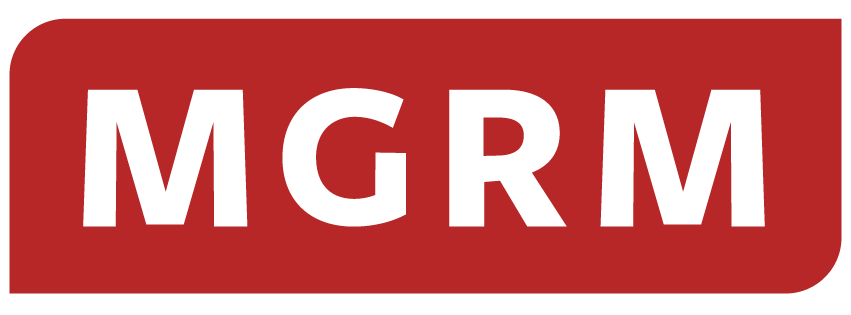
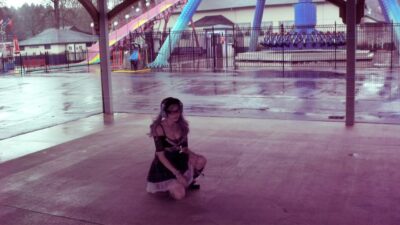

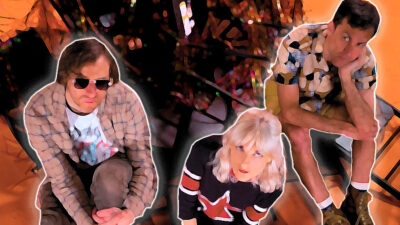
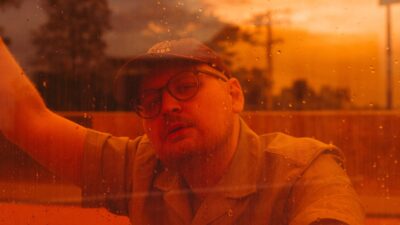
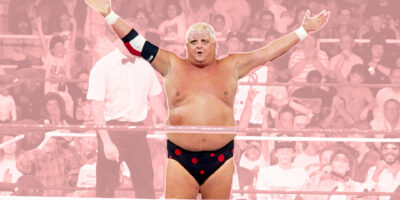

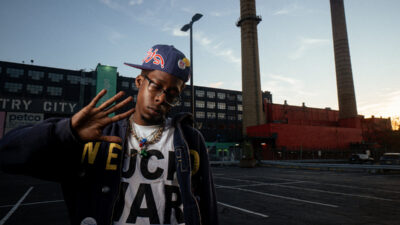
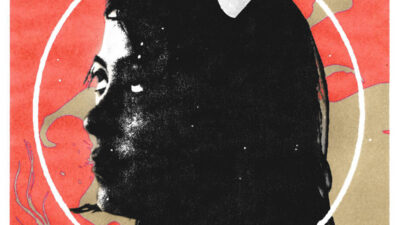

Comments